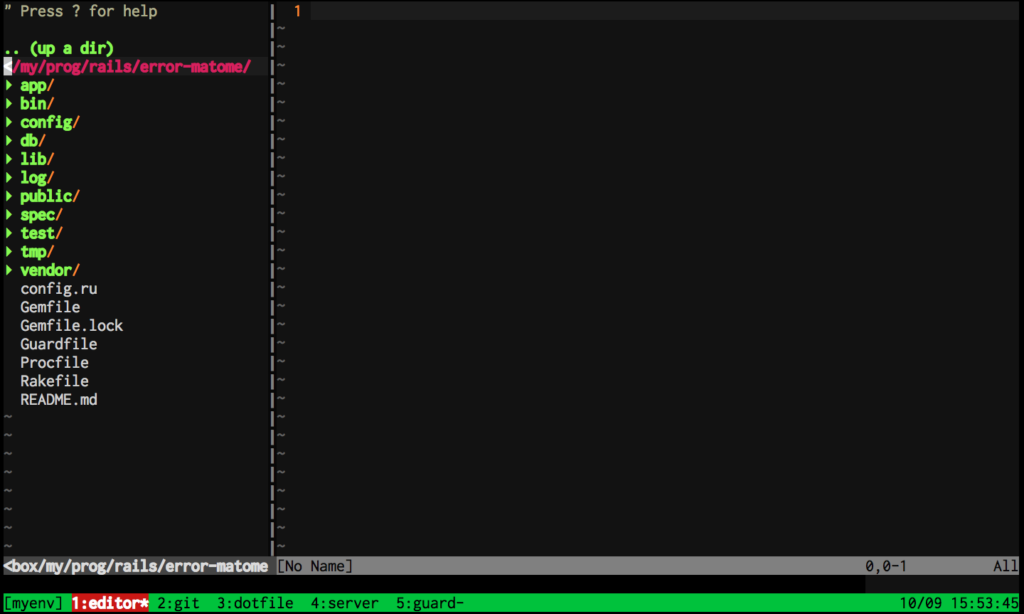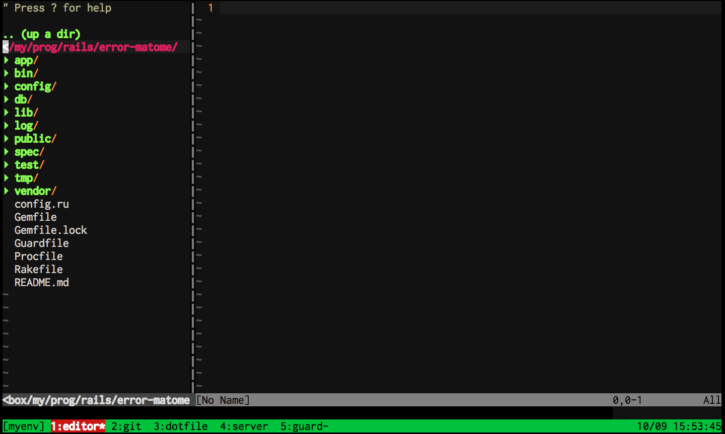
- TMUXINATOR LAYOUT OPTIONS HOW TO
- TMUXINATOR LAYOUT OPTIONS INSTALL
- TMUXINATOR LAYOUT OPTIONS SOFTWARE
- TMUXINATOR LAYOUT OPTIONS WINDOWS
project_root: the starting directory for each command that you tell Tmuxinator to execute.project_name: the name of the project this becomes part of the command you use to launch a Tmux session, e.g., start_my_project.Here is an explanation of the options the example uses: There are more options available than the ones in my example, but I use this relatively simple configuration for my day-to-day Django work, and it saves a bunch of time. The Tmuxinator docs describe everything that you may configure with a project file. Obviously, this should match whatever directory structure you actually use for your virtualenvs. The example assumes that a virtualenv exists in a directory named my_project and the env directory contains a directory named my_project (e.g., in my case, ~/envs/my_project/my_project). The example creates a Tmuxinator project file named my_project.yml, which generates a my_project.tmux file and creates the command start_my_project that you can use to start the Tmux session. manage.py runserver - logs : layout : even-horizonal panes : - tail -f /opt/local/var/log/nginx/access.log - tail -f /opt/local/var/log/nginx/error.log - sudo python -m smtpd -n -c DebuggingServer localhost:25 Explanation of the Example manage.py dbshell - server : venvwrapper & workon my_project & cd my_project &. manage.py shell - database : venvwrapper & workon my_project & cd my_project &. project_name : my_project project_root : ~/ tabs : - zsh : ls -l - shell : venvwrapper & workon my_project & cd my_project &. A Django Example # ~/.tmuxinator/my_project.yml # you can make as many tabs as you wish.


TMUXINATOR LAYOUT OPTIONS WINDOWS
The following is a Django example in which I create a Tmux session with multiple windows (an explanation follows the example). The Tmuxinator docs use a Rails-inspired example. $ tmuxinator new my_projectĪ file should now open in your text editor. Now, use Tmuxinator to create a “project file” (a YAML file containing shorthand configuration settings for Tmux). Create a Project Fileīefore taking this step, make sure you’ve followed the Tmuxinator installation instructions and have exported your EDITOR shell variable, e.g.: $ export EDITOR=vim
TMUXINATOR LAYOUT OPTIONS INSTALL
Next, install Tmuxinator (instructions here).Īs a side note, I recommend using RVM to manage your Ruby versions. It’s available in apt-get, MacPorts, etc.
TMUXINATOR LAYOUT OPTIONS SOFTWARE
Install Tmux with your package management software of choice.
TMUXINATOR LAYOUT OPTIONS HOW TO
I will skip explaining how to install those tools or use them, since many tutorials on those subjects exist already, in addition to the virtualenv docs and virtualenvwrapper docs.Īfter this point I will assume you have created a virtualenv for your Python code in a directory named my_project and have configured virtualenvwrapper so that you can execute workon my_project to activate the virtualenv. If you don’t use these tools, remove the venvwrapper & workon my_project portion of the examples. They just make working with multiple Python projects easier. Note that you do not need to use either of those tools to set up or tear down a Django development environment with Tmux. My example uses virtualenv and virtualenvwrapper. If you are a Screen user, then I suggest you try Tmux, but you can probably achieve a similar method to the one described in this post using Screen and one of the automation scripts designed to work with it. So, I tried Tmux, and I haven’t gone back. However, I grew dissatisfied with the pace of development in the project, the lack of new features, and the inconsistent availability of vertical splits across different platforms. Until earlier this year, I had used GNU Screen for managing persistent terminal sessions. Virtualenvwrapper, a set of extensions to virtualenvīy the end of this post, you will have a new command available in your terminal that will create a Tmux session with multiple views into your Django project.Virtualenv, a tool for creating isolated Python environments.Tmuxinator, a nice Ruby gem for automating Tmux.



 0 kommentar(er)
0 kommentar(er)
